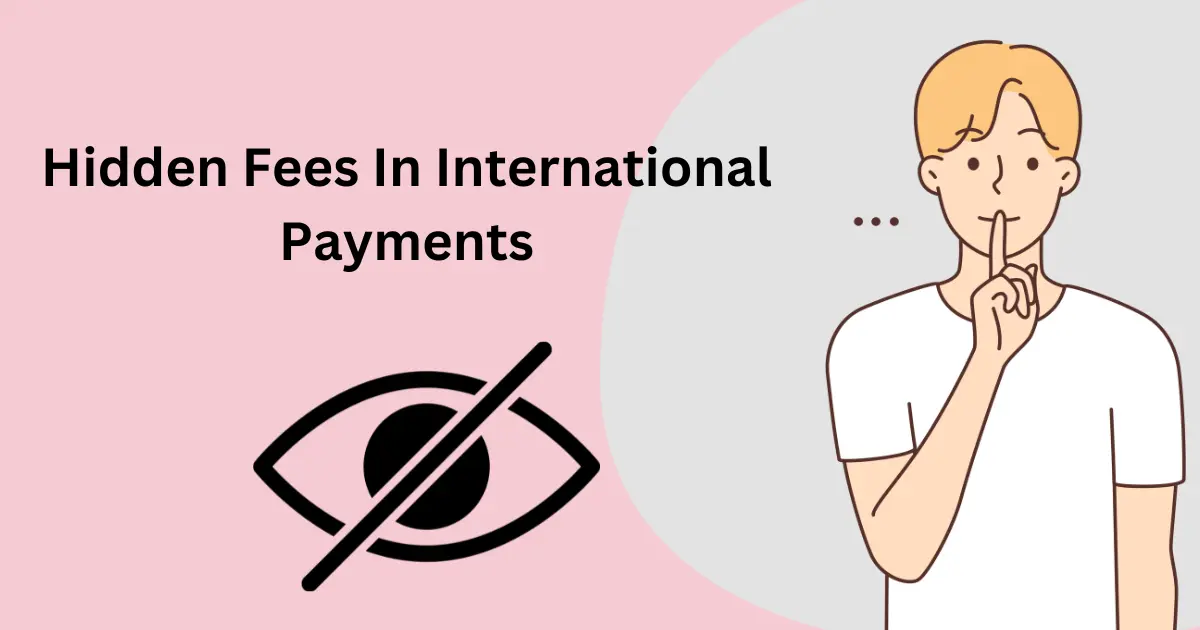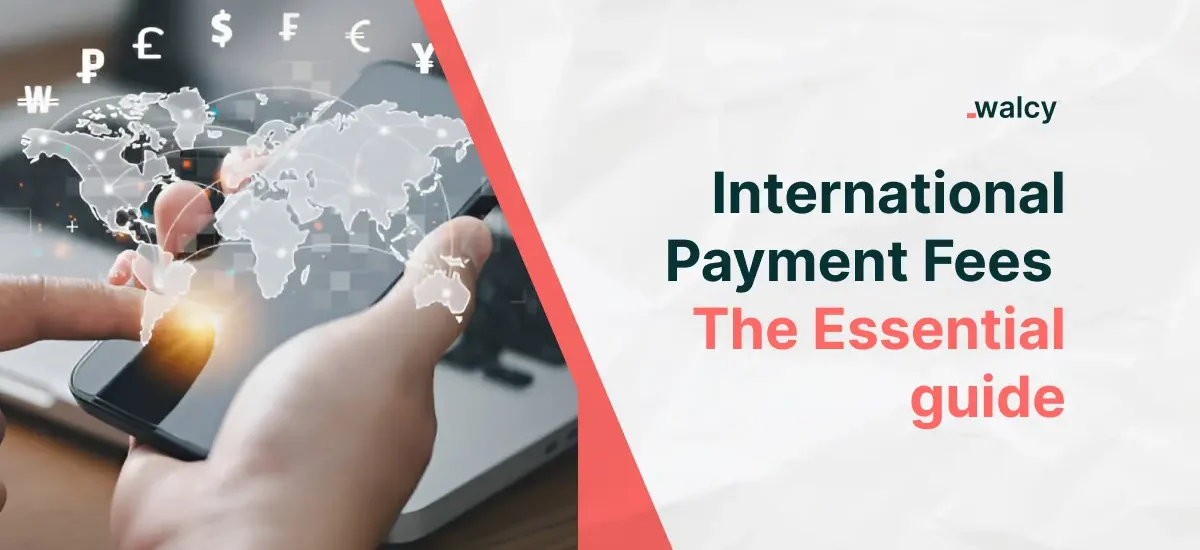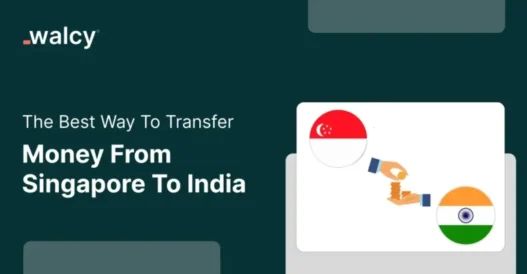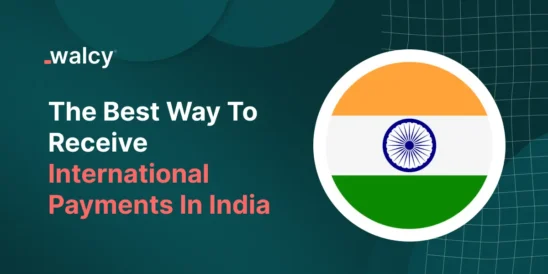The international payment fees can take a huge bite regarding the cost of doing business across borders.
Whether you’re an individual transferring money to your folks who live abroad or a business facilitating transactions over borders, knowledge about international payment fees is critical.
This guide goes into great depth to give you all the information you need, detailing the prices of international money transfers, hidden fees, costs for international wire transfers, cross-border payments, and so much more.
I’d like to begin with what international payment fees are.
International Payment Fees
An international payment fee is the charge, payment providers take for their service of facilitating sending and receiving money through various jurisdictions. This happens mostly between two different currencies.
The costs can be deducted by banks, processors, or service providers. Some factors that influence international payment fees are the transfer means, the currencies to be used, and even the bank of choice.
Types of International Payment Fees
Transfer Fees:
These refer to fees generally charged by the bank of the sender or a channel payment service while processing payments.
Recipient Fees:
The fee is taken by the recipient’s bank upon receiving the payment.
Intermediary Fees:
The fee charged by banking intermediaries while handling transactions and being the bridge between the sending and the receiving banks.
Exchange Rate Markups:
That is the difference between the mid-market exchange rate and the rate offered by the bank or payment provider.
Hidden Fees in International Payments

Usually, the hidden fees tend to make the transfers cost much more than it appear to the sender. Most of these fees are usually not disclosed to the sender of a transfer.
Common Hidden Fees
Exchange Rate Markups:
Mostly, the banks and money transfer service providers will just offer a lower exchange rate not seen by the user.
Correspondent Bank Fees:
When the money is being transferred, the intermediary banks charge a fee for the same, which is usually kept under the shadows of the bank from which the money is being transferred.
Receiving Bank Fees:
The recipient’s bank may impose a charge for accepting the incoming payment, which is invariably not communicated to the sender.
Service Charge:
Further, some service charges hide transfer fees under the categorization of service charges.
How Not To Be Charged Hidden Costs
Compare Providers:
Utilize comparison tools to stack up prices and exchange rates on offer from various other service providers.
Read the Fine Print:
About the hidden fees. Many times, they put up the warning under the heading of terms and conditions.
Ask for Full Disclosure:
Before sending money, ask your bank or your service provider for a full, detailed breakdown of all the fees.
Use Transparent Providers:
Use transparent service providers; examples would include Walcy bank, which have clearly mentioned charges.
International Wire Transfer Fees
International wire transfers are an efficient means of making remittances; however, they tend to be expensive due to the high fees charged. An international wire transfer is an electronic movement of funds between bank accounts in separate countries. Swaps are typically established by using the SWIFT network; it’s a messaging network that financial institutions around the world use to quickly, accurately, and securely send and receive information.
General Fees On International Wire Transfer
Sending Fees:
Typically $15 to $50 or more, charged by the remitter’s bank.
Receiving Fees:
Banks often charge something like $10 to $20 for the receipt of the incoming payment.
Intermediary Fees:
Up to three intermediary fees with $10 to $30 or even more.
How to Reduce International Wire Transfer Fees
Use Digital Banks:
Digital banks and payment providers usually have lower fees than conventional banks.
Transfer in Local Currency:
Transfer money in its local currency to avoid additional fees for money conversion.
Negotiate Fees:
They will be open for negotiation of your fees. Most banks negotiate the price for you, especially on high-transfers and regular customers.
Cross-Border Payment Charges
Cross-border payments are transactions taking place between a payer and a payee in different countries. These transactions would have associated cross-border payment charges. It’s a payment where the payer and payee belong to separate countries. These can be wider tables like B2B payments, remittance, e-commerce payments, etc
Types Of Cross-Border Retainers Charges
- Transaction Fee: Fixed/ Percentage fees on transaction usage.
- Currency Conversion fee: fees levied on converting one currency to another, commonly the markup on exchange rates.
- Intermediary fee: This is the fee charged by the intermediary banks or payment process which are the mediators in the transaction.
How To Minimize Cross-Border Retainers Charges
- Use specialized providers
- Batch payments
- Negotiate with providers
- Optimize currency management
Learn to save money while making cross-border payments.
Factors Affecting The Cost Of An International Money Transfer
The cost of an international money transfer changes on a huge scale. there are several factors that influence the cost. Some of them are:
- The mode of transfer – bank transfers, different online payment and remittance service providers have different fee structures.
- The transfer amount takes out bigger amounts and sometimes enjoys a better exchange rate.
- Destination country-either costs or savings on the actual transfer of money
- Currency tweens – the exchange rate and fees are different for certain currencies
Comparing Costs Of Different Transfer Methods.
- Bank Transfers: Typically have higher fees and weaker exchange rates, but they are also common and efficient.
- Online Payment Providers: Often come with lower fees and better exchange rates, but sometimes they are restricted to one region/country.
- Remittance Services: It’s convenient to use services like Western Union or MoneyGram when transferring cash, but these are expensive.
Ways To Save Money On International Money Transfer
- Market Survey on the Exchange Rate: Compare the different providers on the number got who has the best coverage.
- Timing the Market: The exchange rate varies; hence set the most appropriate time to do the transfer to save costs.
- Avoid Useless Transfers: Make combined transfers to reduce the number of transactions and costs.
Interbank International Money Transfer Charges
- Sending Bank Fees: Sender’s bank amounting to $15-$50 or more
- Receiving Bank Fees: Roughly about $10 to $20
- Intermediary Bank Fees: The cost might go up by $10 to $30 or more, all thanks to the intermediary bank
Tips To Minimize Some of the Charges
- Online Transfer: Compare and understand that the fees in the in-person transactional costs might be more than that of an online money transfer.
- The Use of Alternative Service: Wise and Payoneer often offers lower fees compared to traditional banks
- Fee-Free Transfer: Some fees free transfers are done by some banks to their customers with premium accounts or staging high transaction volumes
Flywire Costs
Flywire is a company which deals with international payments. Its operations are primarily in the higher education and healthcare industries. It is an international money transfer channel. It enables higher learning institutions, healthcare providers, and people to pay across borders globally at low. Charges.
Costs of Flywire Payment
- Service Cost: Flywire charges a service fee relying on the amount being transferred and the mode of transfer.
- Exchange Rate Margin: The company has good exchange rates. However, the difference can have slight margins as compared to the mid-market rate.
- Other charges: The payment means might have other charges that are specific to a credit card or other payment facilitation means.
Why Choose A Flywire?
- Transparency: Flywire is transparent regarding the fees and the exchange rates relevant to your transaction.
- Convenience: Its platform is very convenient through simple customers’ interfaces and with multiple choice modes of payment.
- Support: The platform provides dedicated and available customers support. It helps users in case a user has some questions or challenges after using the platform.
How to Minimize the Cost of Using Flywire
- Opt for Low-Cost Payment Means: You would be better off if you considered using the means with the lowest fees, such as bank-to-bank transfer or bank deposit instead of credit or debit cards.
- Compare Exchange Rate: Make sure the exchange rate by Flywire is better than the rest.
- Use Promotions: Check the available promotional discounts available to the users.
Outgoing Wire Payments
Outgoing wire payments are commonly used in international transfers. However, it comes with various charges. An outgoing wire payment involves sending money from one account to another, usually across international borders. Typically, these transfers take a short period but can, at times, be costly due to some charges involved.
Costs of Outgoing Wire Payments
- Transfer Fees: These are the fees you are likely to be charged by the sending bank for the processing of the wire transfer. In most cases, while making international transfers, the wire transfer costs about $15-$50 and sometimes even more.
- Exchange Rate Mark-Ups: Banks often mark up or pad the exchange rate. This cost ends up being borne by the transferor.
- Intermediary Fees: Corresponding costs levied by intermediary banks through whom the wire moves ahead.
- Compliance Fees: Such costs are related to regulatory compliance to be met for any type of transaction for anti-money laundering checks.
How to Minimize Outgoing Wire Payment Costs
- Use Online Alternatives: Services like Walcy have cheaper options instead of using a bank wire transfer.
- Negotiate Rates: Bargain for lower rates to be paid with banks, especially for both frequent and high-value transfers.
- Shop Around: Regularly compare providers to find the best rates and lowest fees
Conclusion
International payment fees are important to understand to manage the cross-border transaction activities’ cost. Knowledge of both types of costs and ways to reduce them would lead to an informed decision that would lead to savings in international payments. Compare using traditional banks, digital payment platforms, or specialized service providers and check the best combinations of cost, speed, and reliability.
Know everything about overseas payment.
Know the benefits of having a global account.
Know about foreign exchange service.
Do follow us on Facebook and LinkedIn, to stay connected with us.



